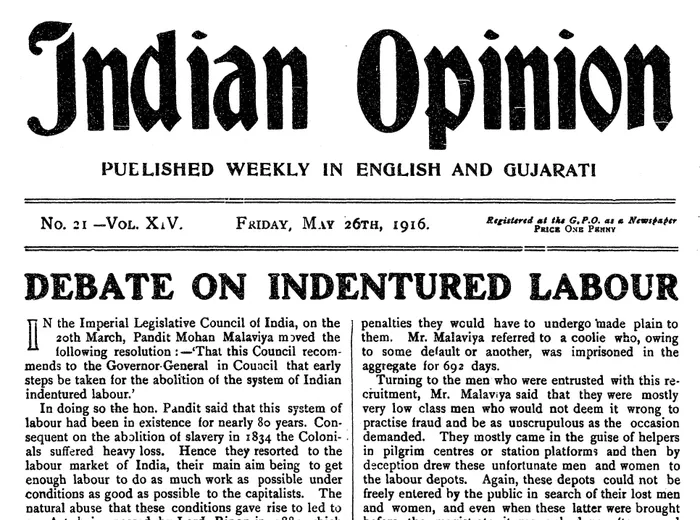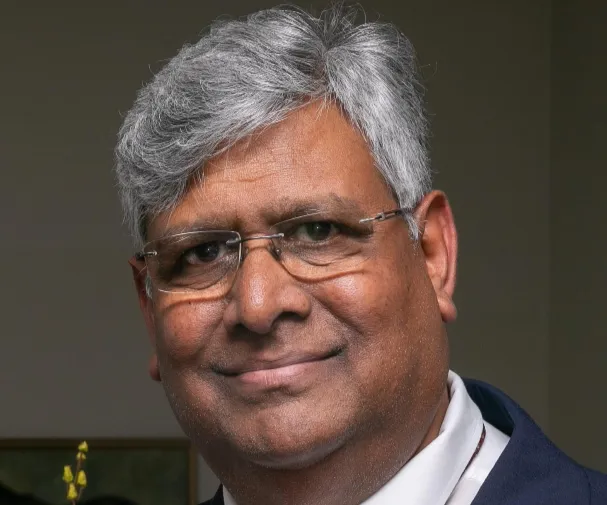POST is about putting people before profits
More than about business

The Indian Opinion founded by Mahatma Gandhi in South Africa in 1903
Image: Supplied
EVER wonder why this newspaper that you are reading, the POST, is persevering against overwhelming odds to make sure it gets onto the streets each week.
When so many titles locally and around the world have shut shop, why is the POST still publishing?
It is well-known that print readership has plummeted over the past decade - a situation worsened by the Covid-19 pandemic - and readers have migrated online, preferring instant access to news via websites and social media. And the POST has not escaped this phenomenon.
However, Independent Media, which owns this newspaper, is all too aware that newspapers are more than just businesses - they are the custodians of truth, the guardians of local identity, and the chroniclers of history. Thus when one fights against all odds to keep publishing, it’s often for reasons that go far beyond profit.
The launch of the POST’s new baby, POST PLUS, a free community-focused publication that will be delivered every Thursday, door-to-door, to 80 000 homes in Chatsworth and Phoenix, is more than an initiative strategised by bean counters. Of course, with such a large number of copies of POST PLUS in circulation, advertisers will naturally be attracted like bees to honey.
But while the added revenue will help to pay the bills, keeping the POST flag flying is a project that is committed to putting people before profits. Unlike government mouthpieces, independent journalism holds power to account. In communities where voices are suppressed or misinformation is widespread, a newspaper can be a last line of defence for truth.
Since March 1955 when POST’s predecessor Golden City Post was launched, this newspaper has weaved itself into the community’s social fabric by documenting everyday triumphs, struggles, and milestones. It has given the Indian community its own voice, while celebrating this group’s culture, and fostering a shared sense of belonging.
During the apartheid era, laws were designed to protect the racist government from exposure and control what people read, heard and saw. The POST had to carefully negotiate a minefield of legislation that restricted the publication of information about banned liberation movements. However, by reflecting in the main the emotions of the Indian community - its sorrows, pain and pangs as well as its passions, delights and pride - this weekly continued to remain relevant even during the dark days.
For seven decades, the POST has kept its finger tightly on the pulse of the community and continued dishing out editorial and advertisements of greatest relevance to those of Indian descent.
But at a time when we are all striving to be one people, and for the sake of unity don’t want to see differences in each other, is there a place for newspapers that cater for a particular community?
Yes, there is, if only to preserve and sustain cultural heritage.
Indian media is the lifeblood of Indian culture. The culture that has been passed from generation to generation since the indentured workers or girmitiyas landed in this country as slave labour, is a vibrant mosaic woven from thousands of years of history, philosophy, and tradition.
Locally, there are religions with temples, mosques and churches; deep-rooted concepts like karma, dharma and reincarnation; festivals and celebrations such as Diwali, Holi, Navaratri and Eid; cuisine with fiery curries, yummy breyani, and sweetmeats; traditional clothing such as saris, salwar kameez and kurta-pyjamas; classical dance forms like Bharatanatyam and Kathak; music ranging from Carnatic and Hindustani classical to Bollywood and folk traditions; and joint and multigenerational families.
Incidentally, as I am writing this column in English, I am listening to the Tamil song Thunbam Nergayil in raga Desh on Spotify. The lyrics by poet Bharatidasan tell how the travails of our lives can be lessened by Tamil poetry, song, dance and wisdom.
Back to Indian newspapers.
When lawyer Mohandas Karamchand Gandhi, later to be known as the Mahatma, was in South Africa, he launched the Indian Opinion, which, during its 60-year spell, exposed the harshness of racism. Before the Indian Opinion, there was The Indian World, which was established in 1898. Three years later, in 1901, a Tamil newspaperman, PS Aiyar founded a bilingual Tamil-English paper Colonial Indian News, which was published weekly. A year later, in 1902, he founded another publication called The African Chronicle.
Between the 1940s and 1970s, other local Indian newspapers also galvanised the Indian community’s rightful place under the South African sun, by aligning with the anti-apartheid struggle. Durban-based Indian publications The Leader and The Graphic were instrumental in creating an Indian identity by staking the political position of the community.
Given the low budgets available for production, the standard of layout and printing of these two stalwart tabloids were not great, but with good writing The Leader and The Graphic made for serious political reads. The editorials by founder Dhanee Bramdaw and editor/columnist Ranji Nowbath in The Leader and by founder Kannabiran Pillay and editor/columnist Pat Poovalingam in The Graphic, mirrored the political agenda of the Natal Indian Congress and each week clearly articulated the political aspirations of Indians in their pages.
In days gone by, no self-respecting Indian worker dare come home on Friday evenings without oily brown paper bags of bhajia, boondhi, sev and nuts from Victory Lounge under one arm and the POST, The Leader or The Graphic under the other. By the way, I am content to boast that I cut my journalistic teeth on The Graphic.
Our Constitution safeguards diversity by recognising the linguistic and cultural differences of people. Thus, having niched publications to cover community-specific issues is not necessarily tantamount to practising editorial racism. It reflects a nation's diversity. In any case, non-niche publications such as the Daily News and Mercury generally give stories with an Indian flavour a wide berth, unless they are scandalous or sensational.
It is worth mentioning that when The Mercury on Thursday November 22, 1860, announced the arrival of the first batch of indentured labourers on the SS Truro on its front page under the headline “The Coolies Are Here”, it stated as follows: “They were a queer, comical, foreign looking, very Oriental like crowd. The men with their huge muslin turbans, bare scraggy shin bones, and coloured garments, the women with their flashing eyes, long dishevelled pitchy hair, with their half covered well-formed figures, and their keen inquisitive glances, the children with their meagre, intelligent, cute and humorous countenances mounted on bodies of unconscionable fragility, were all evidently beings of a different race and kind to any we have yet seen either in Africa or England.”
Today, 165 years later, we no longer look foreign. We are part and parcel of South African society. Our shin bones are well fleshed out. Our women do not have “flashy eyes” and certainly have beautiful, well-groomed hair. Our children are not skinny. Of course, they have not just come ashore after spending six weeks on the open deck of a ship with wretched food, and minimum sanitation and ablution facilities.
Noteworthy is that the reason for the existence of the POST, the Rising Sun and The Tabloid stables of free community newspapers, and now POST PLUS, lies deeper than race, and rather in lifestyle, the emotional bond that a historically immigrant group has with its motherland, and the fears associated with minority groups. Cultural authenticity and the forces of tradition and heritage need not be sacrificed at the altar of modernity or political correctness.
The world over, there is a strong argument for the relevance and popularity of newspapers - and other media platforms such as radio and television - that target a specific community. The Zulu middle-class newspaper Isolezwe, has a loyal readership because of its niche market.
The Indian has a right to enjoy that which appeals to him or her. And is also happy to share with others. Not for nothing that Willards produces “Bunny Chow Crinkle Cut Chips” and Woolies stocks “Halaal dhania lamb sausage” spiced with chilli for a strong bite.

Yogin Devan
Image: File
Yogin Devan is a media consultant and social commentator. Reach him on: [email protected]
** The views expressed do not necessarily reflect the views of IOL or Independent Media.
Related Topics: